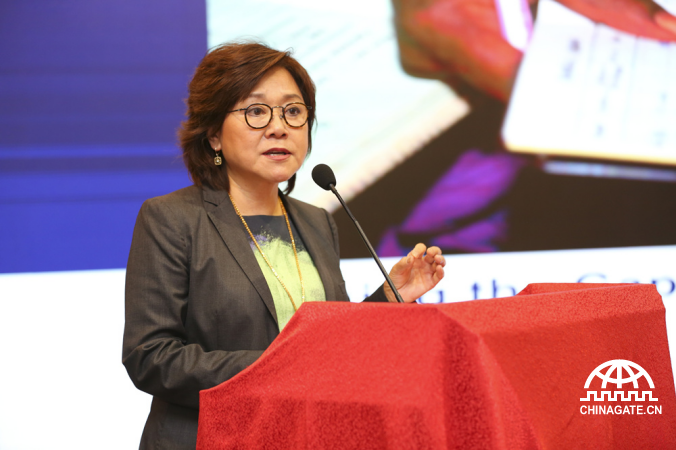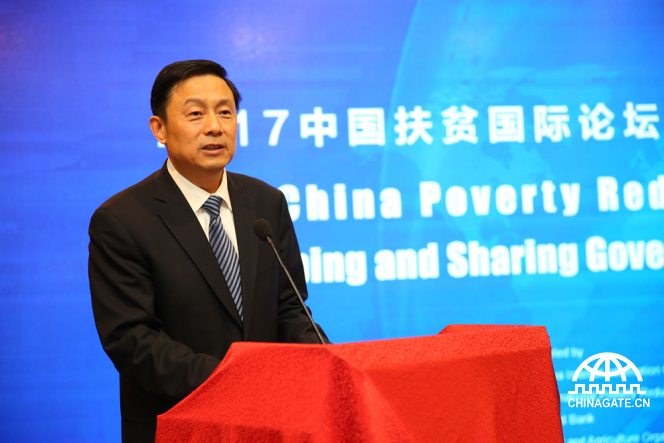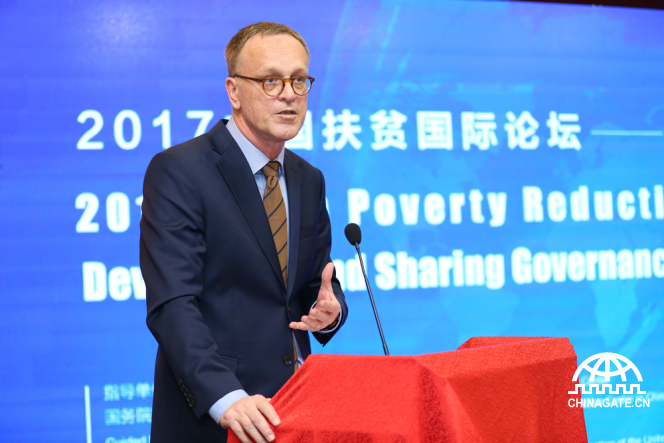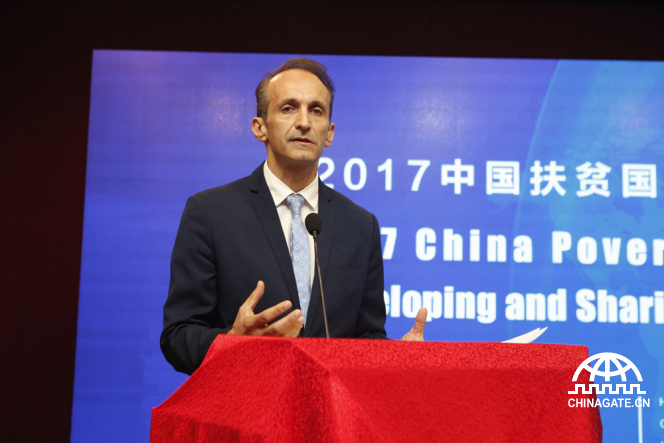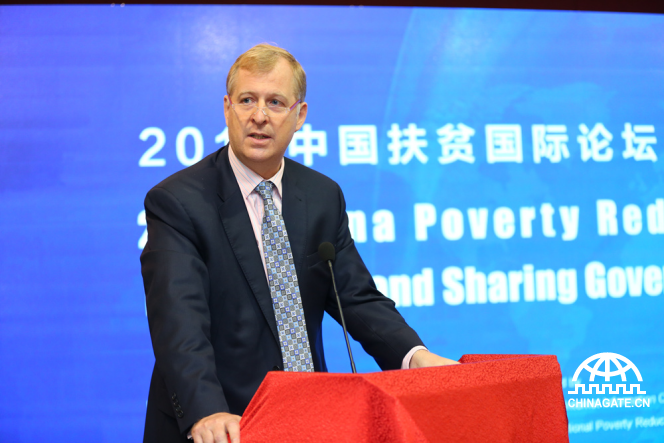Innovations highlighted at China Poverty Reduction Int’l Forum
Guo Weimin, Vice Minister of State Council Information Office, said that China’s experiences in poverty alleviation are part of the spiritual heritage of humanity. With 700 million people living in poverty worldwide, China should take creative approaches to telling its stories, so as to establish a platform for knowledge-sharing between China and the international community. He also emphasized the role of ICTs in poverty alleviation, saying that the Global Poverty Reduction Online Knowledge Sharing Database is a typical example. [Photo: china.org.cn]
Chen Zhigang, Deputy Director of the State Council Leading Group Office of Poverty Alleviation and Development, spoke highly of China’s efforts in lifting more than 700 million people out of poverty. He pointed out that it is a result of strong leadership, comprehensive policies, targeted measures, increased investment and an incentive mechanism, providing inspirations for global poverty alleviation governance. [Photo: china.org.cn]
Bert Hofman, World Bank Country Director of China, Mongolia and Korea, supported Chen’s point by analyzing the international application of China’s poverty reduction experiences. He highlighted both enabling social economic environment for broad poverty reduction and specifically tailored anti-poverty approaches in the following five aspects. These include i) long-term overarching strategic planning and policy, ii) gradual economic reform, job growth and continual infrastructure improvement, iii) boosting agricultural productivity, iv) targeted and systemic poverty reduction. v) urbanization driven by industry-based development zones. [Photo: china.org.cn]
Vincent Martin, FAO Representative in China and DPR Korea, called for greater south-south cooperation to accelerate the global eradication of extreme poverty. He said that to build a world where no one is left behind, and to help achieve SDG1 and SDG2, the invaluable poverty reduction policies and know-how generated in China and elsewhere should be made available to the international community. [Photo: china.org.cn]
Benedict Bingham, Country Director, PRC Resident Mission, ADB, maintained: “policy making in China has always been conscious of the need to avoid leaving the vulnerable behind. So, there has been a conscious effort to push reforms to expand opportunities, while also calibrating the speed of those reforms to avoid creating win-lose imbalances and complementing those reforms with reforms that brought expanded access to social services and education.” [Photo: china.org.cn]
Hoonae Kim, Director, Asia and the Pacific Division, Program Management Department, International Fund for Agricultural Development (IFAD), proposed investing in rural people through inclusive rural finance. In this regard, IFAD has been strengthening productive capacities for rural poor, paying special attention to women, promoting market participation by smallholder farmers, and building resilience to climate variability and other vulnerabilities for the last 40 years. [Photo: china.org.cn]
